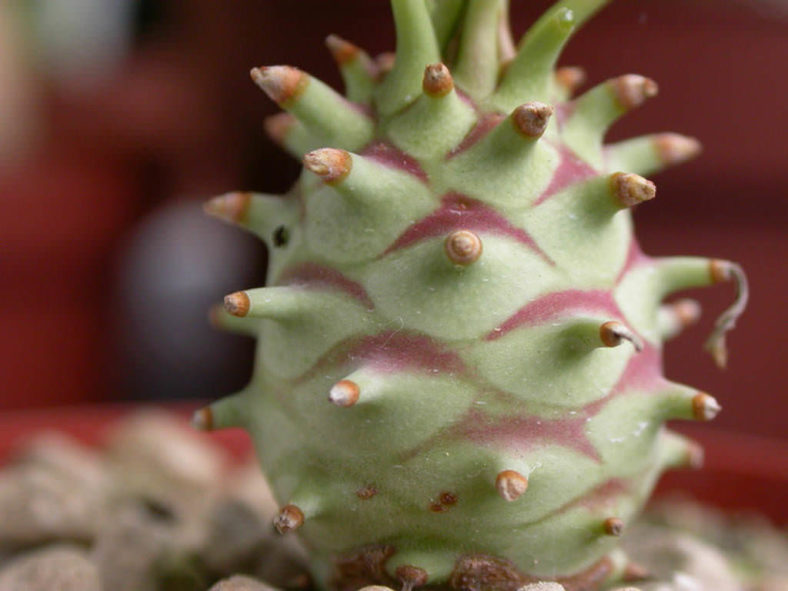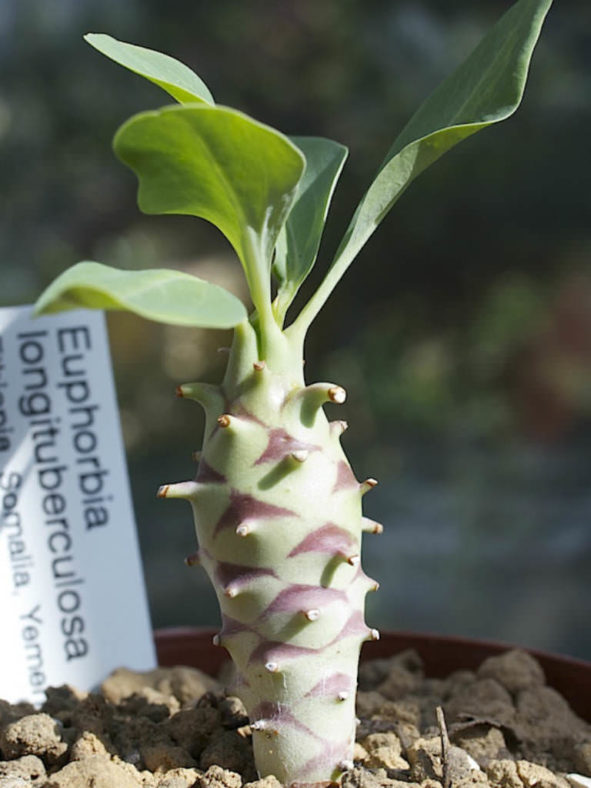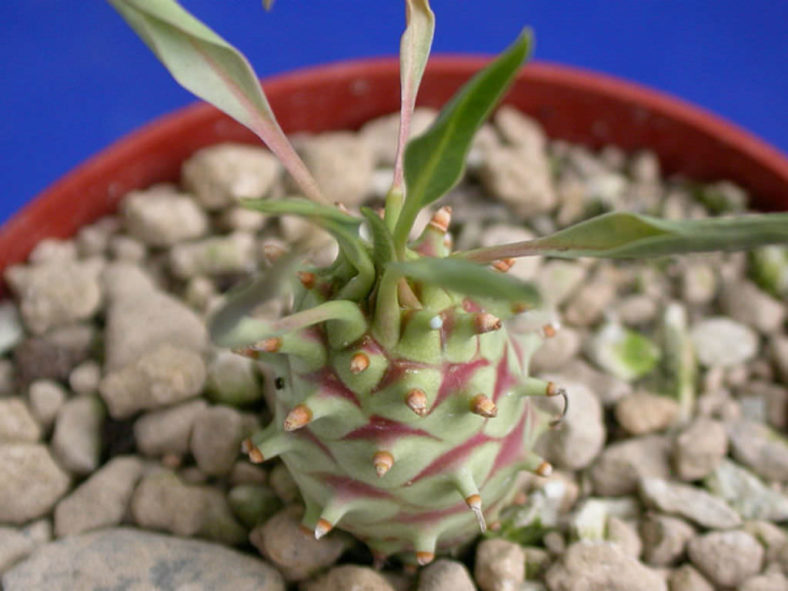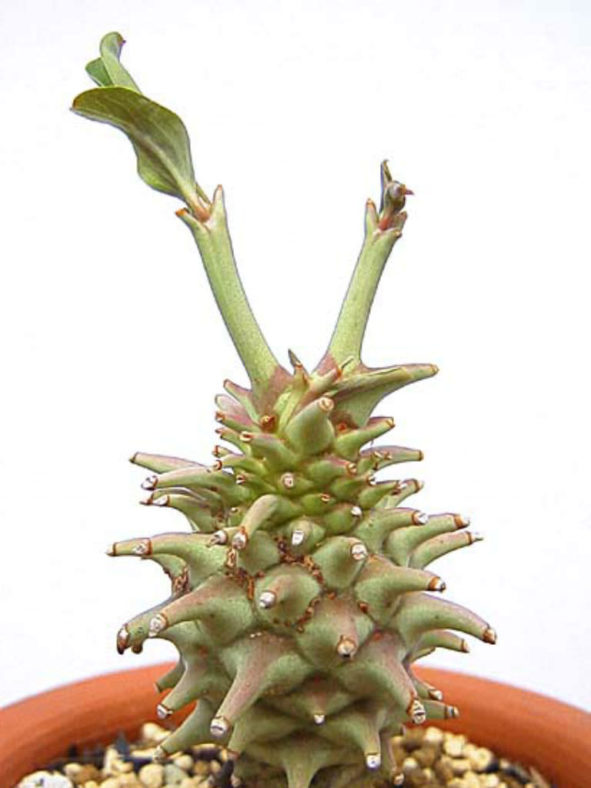Scientific Name
Euphorbia longituberculosa Hochst. ex Boiss.
Synonym(s)
Tithymalus braunii
Scientific Classification
Family: Euphorbiaceae
Subfamily: Euphorbioideae
Tribe: Euphorbieae
Subtribe: Euphorbiinae
Genus: Euphorbia
Etymology
The specific epithet "longituberculosa" (pronounced "lon-gi-too-ber-cu-LO-sa") means "full of long swellings, bumps, etc." and refers to the usually tuberculate stems and branches of this species.
Origin
Euphorbia longituberculosa is native to Ethiopia, Kenya, Oman, Saudi Arabia, Somalia, and Yemen.
Description
Euphorbia longituberculosa is a succulent plant with a thick taproot merging into a swollen, usually tuberculate or sometimes smooth stem. It can grow up to 12 inches (30 cm) tall, while the stem can reach a height of 5.6 inches (14 cm) and a diameter of 2.4 inches (6 cm). The branches are fleshy, tuberculate or smooth, and can grow up to 3.2 inches (8 cm) long and 0.4 inches (1 cm) in diameter, radiating from the stem apex. The tubercles are usually purple. The leaves are linear-lanceolate, measuring up to 2 inches (5 cm) long and 0.4 inches (1 cm) wide.
The flowers are yellowish and appear in spring, reaching up to 0.1 inches (0.25 cm) in diameter.

Hardiness
USDA hardiness zones 10a to 11b: from 30°F (-1.1°C) to 50°F (10°C).
How to Grow and Care
Euphorbias are very easy to care for. These plants require a little pampering to become established, but once they are, they are self-sufficient. More die from too much care and watering than from neglect. Euphorbias need well-draining soil and lots of sunlight. They are not particular about soil pH but cannot tolerate wet soil. Unlike most succulents, Euphorbia does not handle long periods of drought well. It may need weekly watering during the summer. Water whenever the soil is dry several inches below the surface. Water deeply, but don't let them sit in wet soil, which can cause root rot. Add some organic matter or fertilizer to the planting hole. Feed with a half-strength fertilizer monthly if you are growing them in containers or your soil is poor.
These succulents can be grown from seed, but they can be difficult to germinate (or even find). They are usually propagated by cuttings. This can be tricky because of the exuding sap. Rooting hormone is recommended with Euphorbias. They tend to grow problem-free, but a few pests and diseases are worth being alert for.
See more at How to Grow and Care for Euphorbia.
Links
- Back to genus Euphorbia
- Succupedia: Browse succulents by Scientific Name, Common Name, Genus, Family, USDA Hardiness Zone, Origin, or cacti by Genus
Photo Gallery
Click on a photo to see a larger version.


